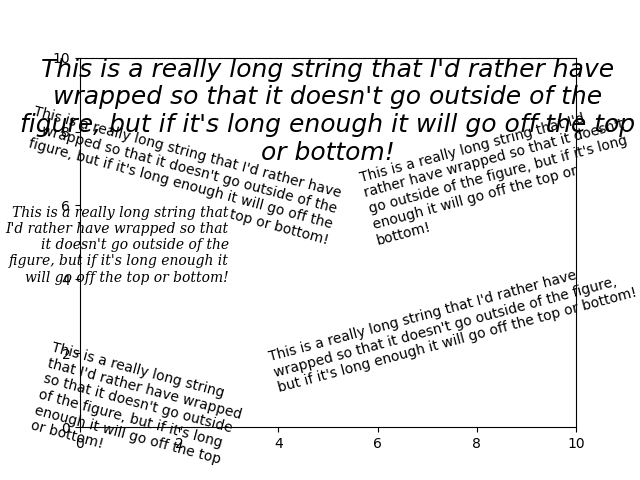Nota
Fare clic qui per scaricare il codice di esempio completo
Testo a capo automatico #
Matplotlib può avvolgere automaticamente il testo, ma se è troppo lungo, il testo verrà comunque visualizzato leggermente al di fuori dei limiti dell'asse.
Nota: il wrapping automatico non funziona insieme a
. L'impostazione "stretto" ridimensiona la tela per accogliere tutto il contenuto e avviene prima del wrapping. Ciò influisce
sui notebook IPython e Jupyter in cui l'impostazione inline viene utilizzata per impostazione predefinita durante il salvataggio dell'immagine da incorporare.savefig(..., bbox_inches='tight')%matplotlib inlinebbox_inches='tight'

import matplotlib.pyplot as plt
fig = plt.figure()
plt.axis([0, 10, 0, 10])
t = ("This is a really long string that I'd rather have wrapped so that it "
"doesn't go outside of the figure, but if it's long enough it will go "
"off the top or bottom!")
plt.text(4, 1, t, ha='left', rotation=15, wrap=True)
plt.text(6, 5, t, ha='left', rotation=15, wrap=True)
plt.text(5, 5, t, ha='right', rotation=-15, wrap=True)
plt.text(5, 10, t, fontsize=18, style='oblique', ha='center',
va='top', wrap=True)
plt.text(3, 4, t, family='serif', style='italic', ha='right', wrap=True)
plt.text(-1, 0, t, ha='left', rotation=-15, wrap=True)
plt.show()